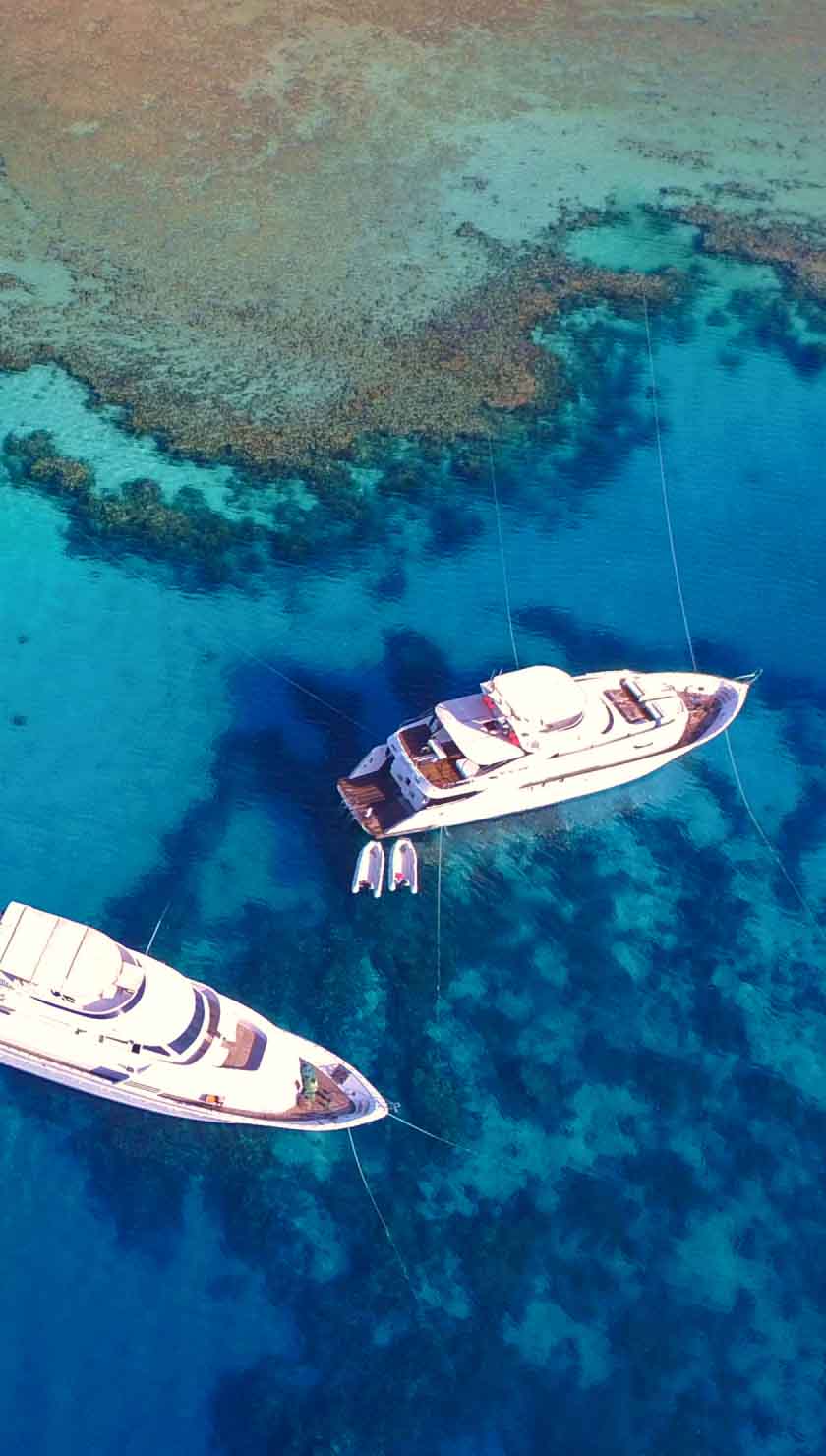Marine life in the Burma Banks
The Burma Banks are exposed to very strong currents that have a tendency to shift, and most scuba diving makes for an exhilarating drift dive. The currents also bring with them large pelagic species, especially sharks. Sadly, their numbers around these sites appear to be in decline, as managing an area as isolated as the Burma Banks is extremely difficult. However, it is still possible to see oceanic whitetip sharks, silvertip reef and nurse sharks up to 3 meters, and even whale sharks. Wherever in the world you find whale sharks, you almost always find manta rays as well, and here is no different. Mobula rays are also a fairly frequent visitor and they can be seen all year around.
Scuba diving for macro species in the Burma Banks is growing in popularity as well. Hiding in amongst huge plate corals and soft corals, you are likely to find frogfish, ribbon eels, harlequin shrimp, ornate ghost pipefish and all sorts of colourful nudibranchs.
Best dive sites in the Burma Banks
Roe Bank consists of many table corals and limestone rocks covered with black corals and coralline algae. Average depth is around 60 feet (18 m), and also where you tend to find sandy patches with resting nurse sharks. Above the limestone rocks, shoals of neon fusiliers and surgeonfish congregate, often passing by during safety stops.
Silvertip Bank is situated some 18 km to the east of Roe Bank. This site comprises many gullies that are now the home of numerous macro species. Octopus and moray eels also like to reside in the cracks and crevices, while hovering above, large red snappers gather. Unicornfish move in a fairly solitary fashion between the large limestone rocks and deeper down, oceanic whitetip sharks patrol the fringes.
Best time to dive in the Burma Banks
Scuba diving season opens in October and continues until May, after which seas will become unpredictable, especially in exposed sites. The best time to visit is usually between December and April, when seas are typically calm and there is no notable weather. Between February and May is when whale shark and manta ray sightings are at their most frequent, and it is also the period when visibility drops slightly due to the blooms of plankton. The beginning of the scuba diving season sees the coolest water temperatures of 81°Fahrenheit (27°C), which gradually warms to 86°Fahrenheit (30°C) towards the end of the dive season.
Experience level for diving the Burma Banks
The Burma Banks are an extremely isolated location, and it is highly unlikely to even see another ship or sign of life while on your scuba diving cruise. For some divers this may be appealing, for others perhaps not. The remoteness and exposed nature of sites, vulnerable to strong and shifting currents, relays that this is an area suited for intermediate and experienced divers only.
How do I get to the Burma Banks
The Burma Banks are very rarely visited, and only a few liveaboards take divers there. The sheer distance from anything else, and the exposed position of the Banks means that most operators will only visit if conditions are very good. Most dive cruises venturing to the Burma Banks will depart from either Phuket, Ranong or Khao Lak, Thailand. All ports are relatively easy to reach; many direct international flights are now available to Phuket International Airport, although some long-haul flights will require a connection. Most connections will be via Bangkok, but may also be made through Singapore, Sydney, Hong Kong, United Arab Emirates or Moscow.
Many Myanmar Liveaboards will usually provide a shuttle service directly from Phuket airport to Khao Lak or Ranong, and it is also possible to rent a car, or catch a bus, depending on your budget. The journey is usually less than 2 hours, and follows a pleasant coastal road along Highway 402, which merges into Highway 4. For those who choose to drive, most signs are posted in both Thai and English.












